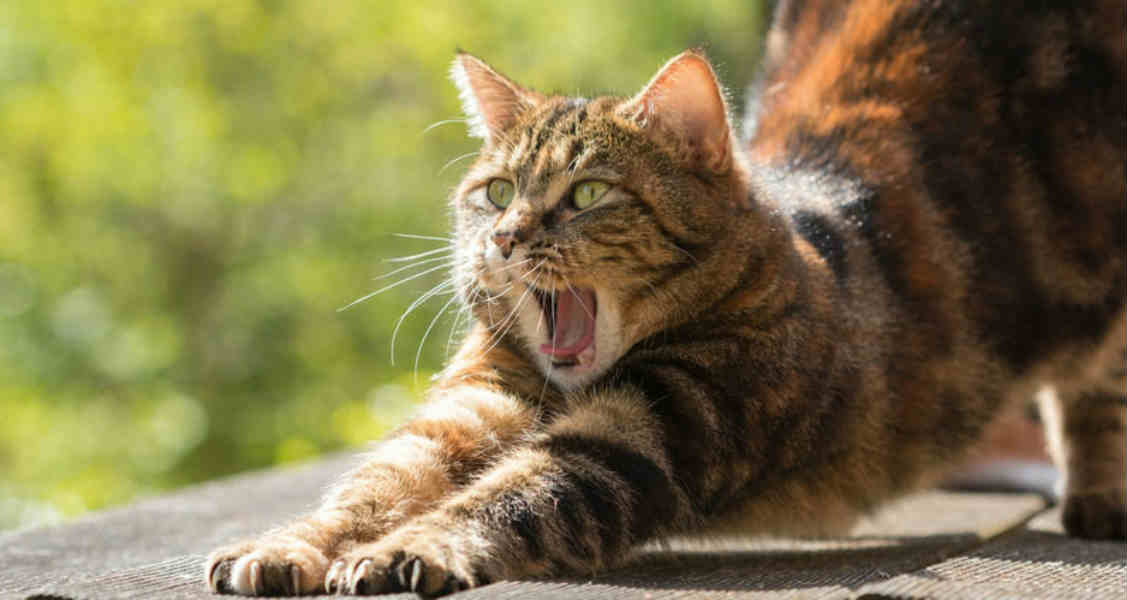How To Tell If Your Cat Is in Pain
By: Dr. Alex Avery, BVSc | Published by Healthcare for Pets | Oct 23, 2018
This is a guide on how to tell if your cat is in pain by knowing the physical and behavioral signs, understanding the causes and things you can do to help provide some relief.
If you would like to download this resource please click on the green button.
The Problem With Pain in Cats
Cats are very good at hiding when they are in pain, and they adapt their behavior to reduce the amount of discomfort they are in. However, cats do exhibit certain behaviors when they are in pain. If you notice any of these signs in your cat, it is important to get to the bottom of whatever condition your friend is suffering from.
There is no reason any cat should have to experience unrecognised or untreated pain, no matter the cause.
How do cats show pain? Signs of pain manifest two ways: physical and behavioral. While some of the signs are more obvious, others can be quite subtle. Here is a list of the most common signs a cat is in pain.
Physical:
- Lameness, difficulty jumping, or an abnormal gait
- Grooming constantly or not at all
- A reaction to touch
- An appetite increase or decrease
- Squinting or tightly closing the eyes
- A hunched-up posture
- Straining to urinate
- Continual licking of a particular body area
- An increase or decrease in the amount of time spent asleep
- Tail flicking
- Shifting weight as if uncomfortable
- Holding the head in a lowered posture
- Growling or groaning
- Tooth grinding
- Panting or trembling
- Holding the ears down and flat
- Biting or scratching at people
- Crying or meowing
Behavioral:
- Withdrawal/hiding
- A decrease in physical activity, including disinterest in play
- Decreased cheek rubbing on people
- A general mood change or a temperament change
- Avoiding bright areas
- House soiling
Consider:
- Is your cat showing any obvious signs of pain, such as crying, groaning, or trembling? Is your cat also exhibiting other symptoms of being unwell? If yes, take your cat to the vet immediately.
- Have you noticed a subtle change in your cat’s behavior, or feel as though your cat is acting slightly “off”? If yes, it’s worth making an appointment with your veterinarian for a full exam. Before your appointment, take notes on your cat’s behavior, writing down the things she does that are unusual, and discuss these items with your vet.
The Causes
A cat in pain may be suffering from any number of different injuries or diseases. There are many conditions that can cause sudden, acute pain or more long-term chronic pain. It is important that a proper diagnosis is made to give your cat the best chance of a full recovery or being as pain-free as possible.
Consider:
- Can you see any sign of injury on your cat, such as a wound or swelling of a body part? Is he reluctant to move, unable to put weight on one leg, or having difficulty breathing? Is he vocalising or reacting to being handled? Is he straining when using the litter tray, vomiting, or experiencing diarrhea? If yes, take your cat to the veterinarian immediately.
- Has your cat recently been diagnosed with an illness or a painful condition such as arthritis? Is she showing any of the more subtle signs of pain or is her condition deteriorating? If yes, schedule an appointment with your veterinarian to see how your pet’s condition can be better managed and what additional options there are for pain relief.
The Solution
If your cat is in pain or even if you feel that her behavior is just slightly different from usual, it is worth making an appointment with your veterinarian. Many conditions can cause illness and discomfort in your pet, and your vet is best qualified to determine what the problem is and how to treat it.
Depending on your pet’s diagnosis, a pain treatment and management plan may include treatment specific to the underlying condition, pain-killing medication, dietary supplementation, environmental management, complementary physical therapies, weight control, and regular monitoring.
Consider:
- Has your pet been diagnosed with arthritis, joint disease, or another long-term condition? If yes, consider weight loss, environmental management, dietary supplements, physical therapies, and regular monitoring of pain levels.
- Has your pet been diagnosed with acute inflammation or damaged tissue? If yes, consider comfortable bedding, restricting activity, gentle massage, and hot or cold packs.
Bonus Tips
- Never give your cat a pain-relieving medication without first discussing it with your vet, as some medications for humans or other animals are toxic to cats.
- Using different pain-killing treatments at the same time can create a synergistic effect for better pain control.
- Be sure to let your vet know if a treatment program is not working as well as you would like or your cat’s pain levels appear to be increasing.
Reference: https://www.ncbi.nlm.nih.gov/pmc/articles/PMC4765852/


Disclaimer: healthcareforpets.com and its team of veterinarians and clinicians do not endorse any products, services, or recommended advice. All advice presented by our veterinarians, clinicians, tools, resources, etc is not meant to replace a regular physical exam and consultation with your primary veterinarian or other clinicians. We always encourage you to seek medical advice from your regular veterinarian.

